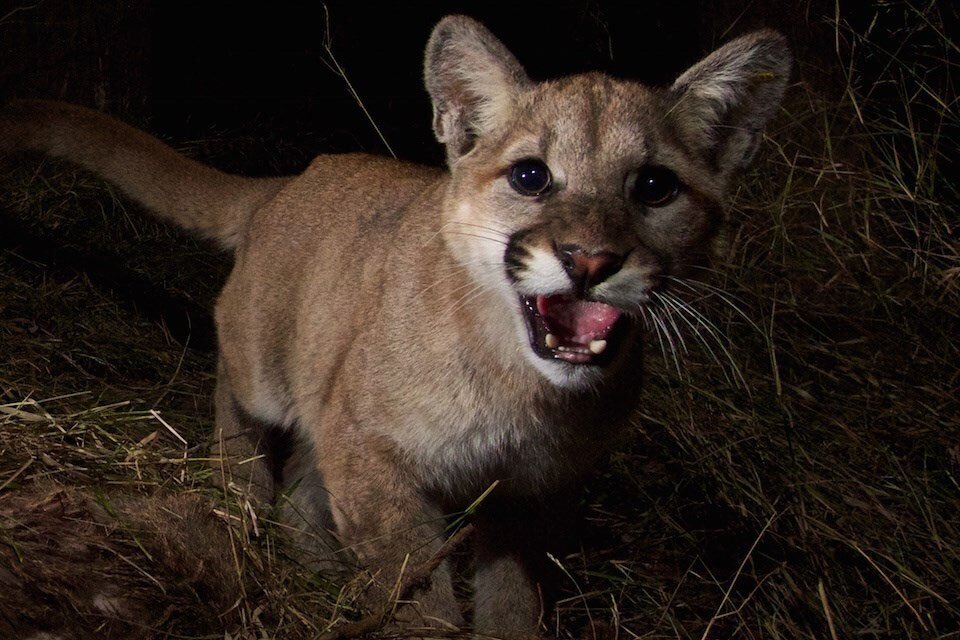

Five very small populations have regained an unsteady foothold just east of the Rockies in the 1980s and 90s, but their future is uncertain.

Mountain lions used to occupy the entire United States coast-to-coast, but today they are primarily found in 14 western states with a small endangered population in Florida. How and Where do Mountain Lions Live in the U.S.?
#Male mountain lion how to
To learn how to identify a lion’s age and gender, check out this helpful ID Guide from the Washington Department of Fish and Wildlife. Mountain lion kittens or cubs (either term is correct) have camouflaging spots and rings around their tails that fade as they mature.įor more information on mountain lions check out MLF’s Biology & Behavior page. The most recognizable feature of the American lion is its long and heavy tail, which measures almost one-third of the lion’s total length. Adult males will measure 6 to 8 feet from nose to tail tip and females 5 to 7 feet. Exceptional individuals have exceeded 200 pounds, but this is rare. Though sizes vary greatly throughout the cat’s geographic range, a typical adult male will weigh 110 to 180 pounds and the female 80 to 130 pounds. The sexes look alike, though male lions are 30 to 40 percent larger than females. Adult mountain lions have a tan-colored coat - much like the African lion - but are slighter in build with a head that is smaller in proportion to its body. each and every year.įor more information, read How Many Lions are in the United States? What Do Mountain Lions Look Like? People are responsible for the death of more than 3,000 mountain lions in the U.S. And, many of those lions depend upon severely fragmented and degraded habitat, are in severe danger of over-hunting and road kill, are imperiled by intolerance of their presence on the landscape, and are so few and unconnected they are on the edge of genetic viability. Based on the best available data at this time, the Mountain Lion Foundation believes the mountain lion population in the United States is unlikely to exceed 30,000. Population estimation models are based on numerous long-term studies of lion populations, their prey, and habitat mapping. The solitary and elusive nature of mountain lions makes them difficult to research and practically impossible to count. To date there has never been a confirmed case of a melanistic (black) mountain lion. Many people have heard the term “black panther,” but these are actually melanistic jaguars or leopards: a genetic trait that makes an individual cat’s fur appear much darker than the usual coloration.

To learn more about the origins of some of these names, read Chapter 1 of Cougar: The American Lion.Īlthough the mountain lion may have more names and nicknames than any other animal, the following are not names for lions and represent completely different species: bobcat, lynx, ocelot, jaguar, leopard, cheetah, Asiatic lion, African lion, and tiger. Depending on the region and native language, common names for the American lion include: mountain lion, cougar, panther, puma, painter, el leon, and catamount. Barnes listed 18 native South American, 25 native North American, and 40 English names for the same animal. Today, mountain lions are listed in dictionaries under more names than any other animal in the world. As a result, each native tribe and group of European explorers gave the cat a different name. Historically they could be found anywhere from the Canadian Yukon to the Straits of Magellan - over 110 degrees in latitude - and from the Atlantic seaboard to the Pacific Ocean. Mountain lions once ranged more extensively than any other mammal in the Western Hemisphere. YES! The American lion’s scientific name is Puma concolor, and is sometimes referred to as “the cat of many names.” The scientific name was changed from “ Felis concolor” in recent decades. Are Mountain Lions, Cougars and Panthers all the Same Animal? Click here for more information on mountain lion tracks, scat and other signs. Dog tracks are more symmetrical, and the raised dirt in the middle forms an “X” shape. Their toes slant - similar to human feet - indicating left or right foot. Walking, the cat’s hind foot steps in his fore track, creating overlapping patterns. Their claw marks do not show in the track. Mountain lions have a distinctive “M” shaped pad with three lobes on the rear of the heel (dogs only have two lobes).


 0 kommentar(er)
0 kommentar(er)
